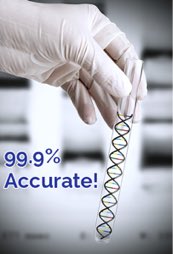Unlocking the Truth: The Precision and Power of Modern DNA Testing

In an era where information is at our fingertips, understanding the nuances of DNA testing has never been more critical. From unraveling family mysteries to solving complex legal disputes, DNA testing serves as a cornerstone of modern science and justice. This article delves into the evolution, accuracy, and impact of DNA testing, illuminating how this powerful tool provides clarity and confidence in a world filled with questions.
The Evolution of DNA Testing
The journey of DNA testing began in the early 20th century, transforming from rudimentary blood typing methods to the sophisticated genetic analyses we rely on today.
Early Methods: Blood Typing and Limitations
In the 1920s, paternity determination hinged on blood type analysis. While blood grouping could exclude a potential father, it couldn’t conclusively establish paternity due to the widespread nature of common blood types. This method lacked specificity, often leaving crucial questions unanswered.
Breakthrough with DNA Profiling
The 1980s marked a revolutionary shift with the advent of DNA profiling, pioneered by Dr. Alec Jeffreys. This technique analyzed Variable Number Tandem Repeats (VNTRs) in DNA, providing a unique genetic fingerprint for every individual except identical twins.
Modern Advancements: STRs and PCR Technology
Today, the focus has shifted to Short Tandem Repeats (STRs) and the utilization of Polymerase Chain Reaction (PCR) technology. STR analysis examines specific regions in the DNA where short sequences are repeated. PCR amplifies these regions, allowing for detailed examination from minimal samples.
Understanding the Accuracy and Reliability of DNA Testing
The 99.99% Confidence
Modern DNA tests boast an accuracy rate of 99.99% or higher in determining biological relationships. This high probability offers near-certainty, providing peace of mind and resolution in personal and legal matters.
The Science Behind the Precision
- STR Analysis: By evaluating multiple STR loci, the test reduces the chance of coincidental matches to negligible levels.
- PCR Amplification: PCR enables the analysis of tiny DNA samples, ensuring that even degraded or minute quantities can yield reliable results.
Quality Standards and Accreditation
Reputable laboratories adhere to strict quality control measures and are accredited by organizations such as the AABB (American Association of Blood Banks) and ISO (International Organization for Standardization). These accreditations ensure that the testing processes meet international standards for accuracy and reliability.
The DNA Testing Process Demystified
Simple and Non-Invasive Sample Collection
The procedure is straightforward and painless:
- Buccal Swab Collection: A soft swab is rubbed against the inside of the cheek to collect epithelial cells.
- At-Home Kits: Individuals can use DNA testing kits at home, following clear instructions for sample collection.
- Laboratory Analysis: Samples are sent to the lab, where DNA is extracted, amplified, and analyzed.
Fast Turnaround Times
Advancements in technology have significantly reduced processing times. Results are often available within a few days, expediting decisions in critical situations.
Legal Admissibility
For cases requiring legal proof, such as child custody or immigration, tests must follow a chain-of-custody protocol:
- Verified Identity: Participants’ identities are confirmed through government-issued IDs.
- Professional Collection: Samples are collected by a neutral third party.
- Secure Handling: Samples are tracked meticulously to prevent tampering.
Applications and Impact of DNA Testing
Paternity and Maternity Testing
Establishing biological relationships aids in:
- Child Support and Custody: Courts rely on DNA evidence to make informed decisions.
- Inheritance Claims: Determining rightful heirs prevents legal disputes.
- Personal Knowledge: Individuals gain understanding about their origins.
Learn more about our reliable paternity tests here.
Criminal Justice and Forensics
DNA testing plays a pivotal role in:
- Identifying Suspects: Matching DNA from crime scenes to individuals.
- Exonerating the Innocent: Overturning wrongful convictions through new evidence.
- Missing Persons: Assisting in locating and identifying individuals.
Medical and Ancestral Insights
Beyond legal uses, DNA testing contributes to:
- Genetic Health Risks: Identifying predisposition to certain diseases.
- Ancestry and Genealogy: Uncovering familial connections and ethnic backgrounds.
Addressing Common Concerns and Misconceptions
Privacy and Ethical Considerations
- Data Security: Reputable companies ensure that genetic information is confidential.
- Informed Consent: Participants have control over their DNA data usage.
Fear of Needles or Medical Procedures
- Non-Invasive Methods: No blood draw is required; cheek swabs are sufficient.
Cost and Accessibility
- Affordable Options: The proliferation of testing services has reduced costs.
- Accessibility: At-home kits and numerous collection sites make testing convenient.
Conclusion
DNA testing has transcended its scientific origins to become an accessible and invaluable tool for individuals and society. Its unparalleled accuracy brings certainty to complex situations, from confirming parentage to solving crimes. As technology continues to advance, DNA testing will undoubtedly play an even more significant role in our lives, empowering us with knowledge and fostering trust in the answers it provides.
At DNAForce Inc., we are committed to delivering accurate and confidential DNA testing services. With over a decade of experience, our state-of-the-art laboratories and dedicated professionals ensure you receive reliable results you can trust. Whether you seek a paternity test or other DNA testing services, visit our homepage to learn how we can assist you on your journey to certainty.
Empower yourself with the truth. Choose DNAForce Inc. for clarity and confidence.